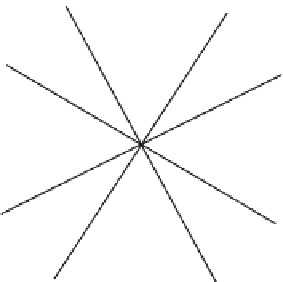Environmental Engineering Reference
In-Depth Information
E
2
R
E
R
P
E
I
2
R
P
R
I E
PI
ER
E
I
P R
P
I
E
2
P
P
I
2
I R
FIGURE 10.9
Ohm's law circle—summary of basic formulas.
e
leCtriCal
e
nergy
Energy
can be defined as the ability to do work (energy and time are essentially the
same and are expressed in identical units). Energy is expended when work is done,
because it takes energy to maintain a force when that force acts through a distance.
The total energy expended to do a certain amount of work is equal to the working force
multiplied by the distance through which the force moves to do the work. In electric-
ity, total energy expended is equal to the
rate
at which work is done, multiplied by the
length of time the rate is measured. Essentially, energy (
W
) is equal to power (
P
) times
time (
t
). The kilowatt-hour (kWh) is a unit commonly used for large amounts of electric
energy or work. The amount of kilowatt-hours is calculated as the product of the power
in kilowatts (kW) and the time in hours (hr) during which the power is used:
kWh = kW × h r
(10.7)
■
Example 10.11
Problem:
How much energy is delivered in 4 hours by a generator supplying 12 kW?
Solution:
kWh = kW × hr = 12 × 4 = 48 kWh
SERIES DC CIRCUIT CHARACTERISTICS
An electrical circuit is made up of a voltage source, the necessary connecting con-
ductors, and the effective load. If the circuit is arranged so the electrons have only
one
possible path, the circuit is a
series circuit
. A series circuit, then, is defined as
a circuit that contains only one path for current flow. Figure 10.10 shows a series
circuit having several loads (resistors).
Note:
A series circuit is a circuit having only one path for the current to flow along.











Search WWH ::

Custom Search